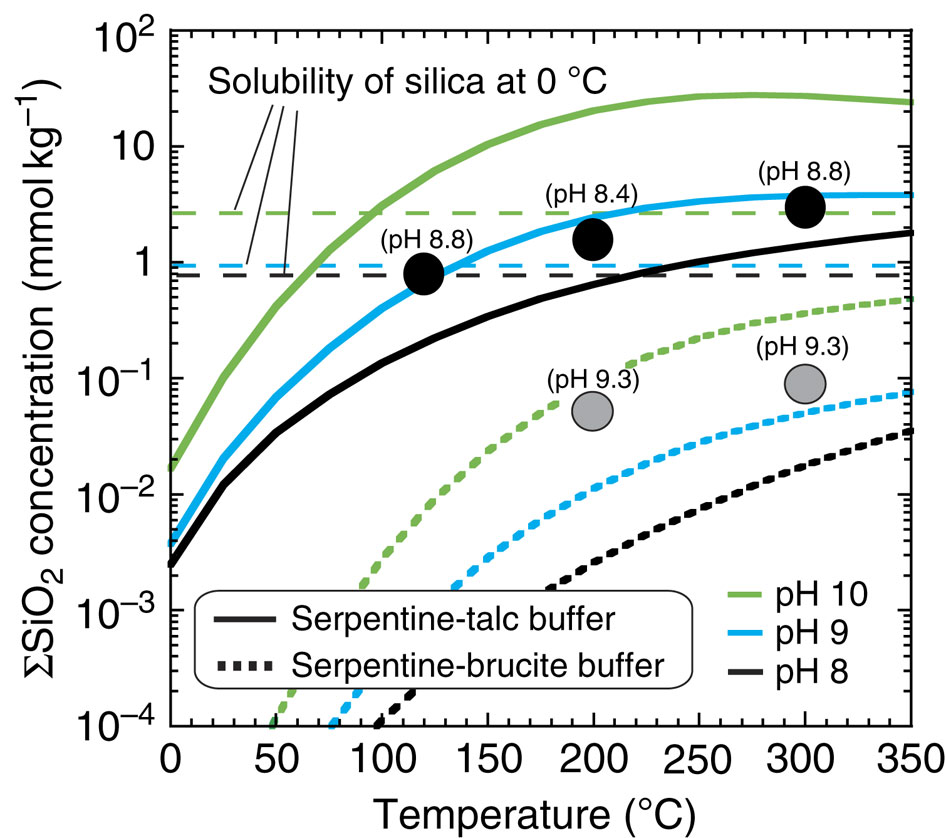エンケラドスのコンドライトに似た核内における高温の水-岩石相互作用と熱水環境
High-temperature water–rock interactions and hydrothermal environments in the chondrite-like core of Enceladus
2015年10月27日 Nature Communications 6 : 8604 doi: 10.1038/ncomms9604

土星の衛星であるエンケラドスには、氷地殻の下に液体の水からなる海洋が存在する。最近、エンケラドス地下海に由来するシリカのナノサイズ粒子が探査機カッシーニによって見つかったことは、地下海の海底で現在も岩石と高温海水との熱水反応が進行していることを示している。本論文では、このようなエンケラドスの熱水環境をさらに制約する実験結果を報告する。まず、シリカナノ粒子の形成を維持するためには、エンケラドスの岩石組成は、地球のマントルのような組成ではなく、隕石である炭素質コンドライトの組成と似ている必要があることがわかった。また、熱水環境にはNH3およびCO2は安定して存在し、これらに富んだ海水組成だというこれまでの探査データとも矛盾しないこともわかった。本研究の結果が示唆することは、シリカナノ粒子を生成するためには、エンケラドスの地下海が氷地殻と物質のやり取りがあろうがなかろうが、反応温度が50℃以上と高いことが必要だということである。そのような高温は、エンケラドスが太陽系形成の直後に形成されたか、あるいは現在の活動が最近おきた加熱イベントが引き金となって生じたかのどちらかを示唆している。本研究が示唆する熱水環境下では、岩石と水との反応で水素生成が効率的に進行する。このことは、化学独立栄養生命にとっての化学エネルギーが、エンケラドス内部で効率よく提供されていることを意味する。
Yasuhito Sekine, Takazo Shibuya, Frank Postberg, Hsiang-Wen Hsu, Katsuhiko Suzuki, Yuka Masaki, Tatsu Kuwatani, Megumi Mori, Peng K. Hong, Motoko Yoshizaki, Shogo Tachibana & Sin-iti Sirono

